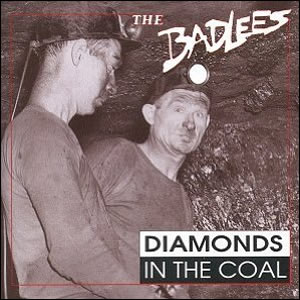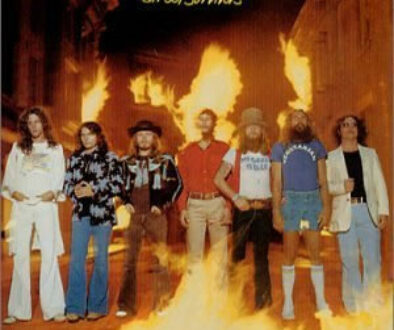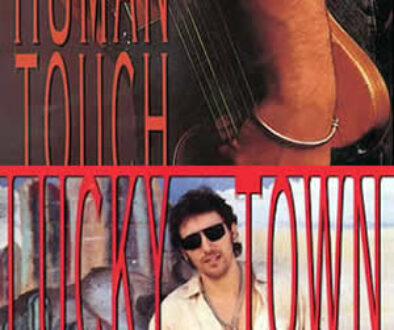Shout at the Devil by Mötley Crüe
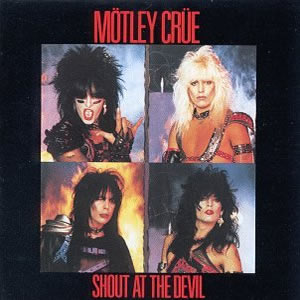 Shout at the Devil is the point where Mötley Crüe‘s musical range widened and the perfect template for “hair metal” was forged for the coming years. Coming nearly two full years after their fine but raw debut , Too Fast for Love, it is clear that the band had fully embraced a Judas Priest style of metal with just a bit of seventies glam rock for full effect in the MTV age. This is also the album where bassist Nikki Sixx fully arrived as a composer, writing hook-heavy anthems that strike adolescents in the heart. Through its title and theme, the album also fully embraces the occult and other dark themes, almost to the point of absolute absurdity.
Shout at the Devil is the point where Mötley Crüe‘s musical range widened and the perfect template for “hair metal” was forged for the coming years. Coming nearly two full years after their fine but raw debut , Too Fast for Love, it is clear that the band had fully embraced a Judas Priest style of metal with just a bit of seventies glam rock for full effect in the MTV age. This is also the album where bassist Nikki Sixx fully arrived as a composer, writing hook-heavy anthems that strike adolescents in the heart. Through its title and theme, the album also fully embraces the occult and other dark themes, almost to the point of absolute absurdity.
Much like on the debut album, the guitar work of Mick Mars continues to be the real musical highlight on Shout at the Devil. Mars offers some dirty, crunching, and powerful riffs throughout, while adding a nice variation of melodic leads with varying techniques and sonic flavors. These intense and inspired guitar solos greatly enhance the compositions and bring the album overall to a higher level.
Of course, a little controversy never hurt a rock album’s sales. The original album cover was pure black with a pentagram but was soon replaced due to strong objections by religious groups. Then to just tweak the negative hysteria over the top, the group chose the Beatles’ “Helter Skelter” as the only cover on the album. This choice appears to be solely as a homage to Charles Manson and his group, whose bio carried the same name. Still, aside from messing with the mystique, this song does translate surprisingly well to Mötley Crüe’s style.
 Shout at the Devil by Mötley Crüe |
|
|---|---|
| Released: September 26, 1983 (Elecktra) Produced by: Tom Werman Recorded: Cherokee Studios, Hollywood, May-July 1983 |
|
| Side One | Side Two |
| In the Beginning Shout at the Devil Looks That Kill Bastard God Bless the Children of the Beast Helter Skelter |
Red Hot Too Young to Fall in Love Knock ‘Em Dead, Kid Ten Seconds to Love Danger |
| Band Musicians | |
| Vince Neil – Lead Vocals Mick Mars – Guitars Nikki Sixx – Bass, Vocals Tommy Lee – Drums, Vocals |
|
Engineer Geoff Workman composed the haunting “In the Beginning” which acts as an intro piece for the title song “Shout at the Devil”. The great rudimentary stops during the verses topped by the frantic vocals of Vince Neil give this otherwise chanting and fist pumping anthem a definite edge.
“Looks That Kill” is the closest to a true classic on the album. Released as a single and peaking at #12 on the Mainstream Rock charts, the song was Mötley Crüe’s first true widespread exposure, due mainly to its heavily rotated video. The song is an early album showcase for Mars, who uses inventive riffing and wailing leads to forge a song that remains an all-time fan favorite.
“Bastard” starts with an awkward drum sequence by Tommy Lee before settling into a hard-rock groove which alternates between the measured verses and driving choruses. Mars’s delicate “God Bless the Children of the Beast” is an acoustic piece with a melodic chorus of electric guitars on top that was no doubt inspired by Steve Hackett and/or Randy Rhoads and acts as an intro to “Helter Skelter” to complete side one.
The second side begins with “Red Hot”, driven by the thumping rhythm of Lee and Sixx, before the pop rocker “Too Young To Fall in Love” with strong vocal melodies and hook which are perfect for what the band was doing at the time, making it a strong radio hit. The middle of the side contains a few boilerplate numbers, “Knock ‘Em Dead, Kid” and “Ten Seconds to Love”, both co-written by Neil and Sixx and combined acting as the only true filler on Shout at the Devil.
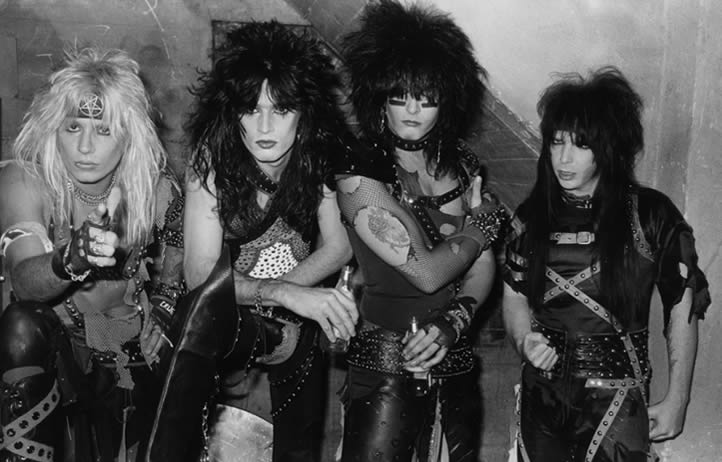
What pushes this album over the top is the strong closing track “Danger”, which is the finest pure song on the album. Melodramatic but beautiful, the song contains a variety of guitar textures by Mars along with passionate and wailing vocals by Neil and great drum fills by Lee, making it a very complete band effort and a showcase for their talent at the time. “Danger” is moody and strong, and almost sounds like a holdover of some of the finer material from their first album.
Shout at the Devil sold well (reaching 4x platinum in sales) and acted as a catalyst to propel Mötley Crüe to becoming the top selling heavy metal act of the 1980s. It was also a visible landmark of the high-water mark for the style of rock which would be copied into extinction within a decade of its release.
~
Part of Classic Rock Review’s celebration of 1983 albums.


